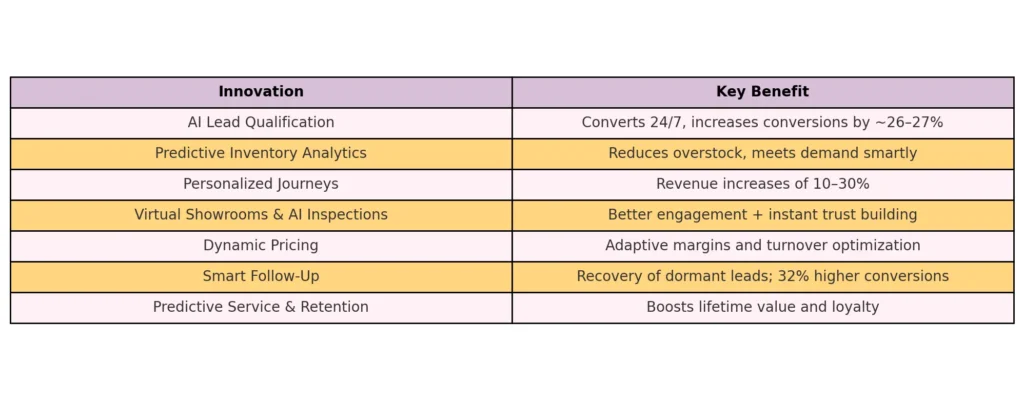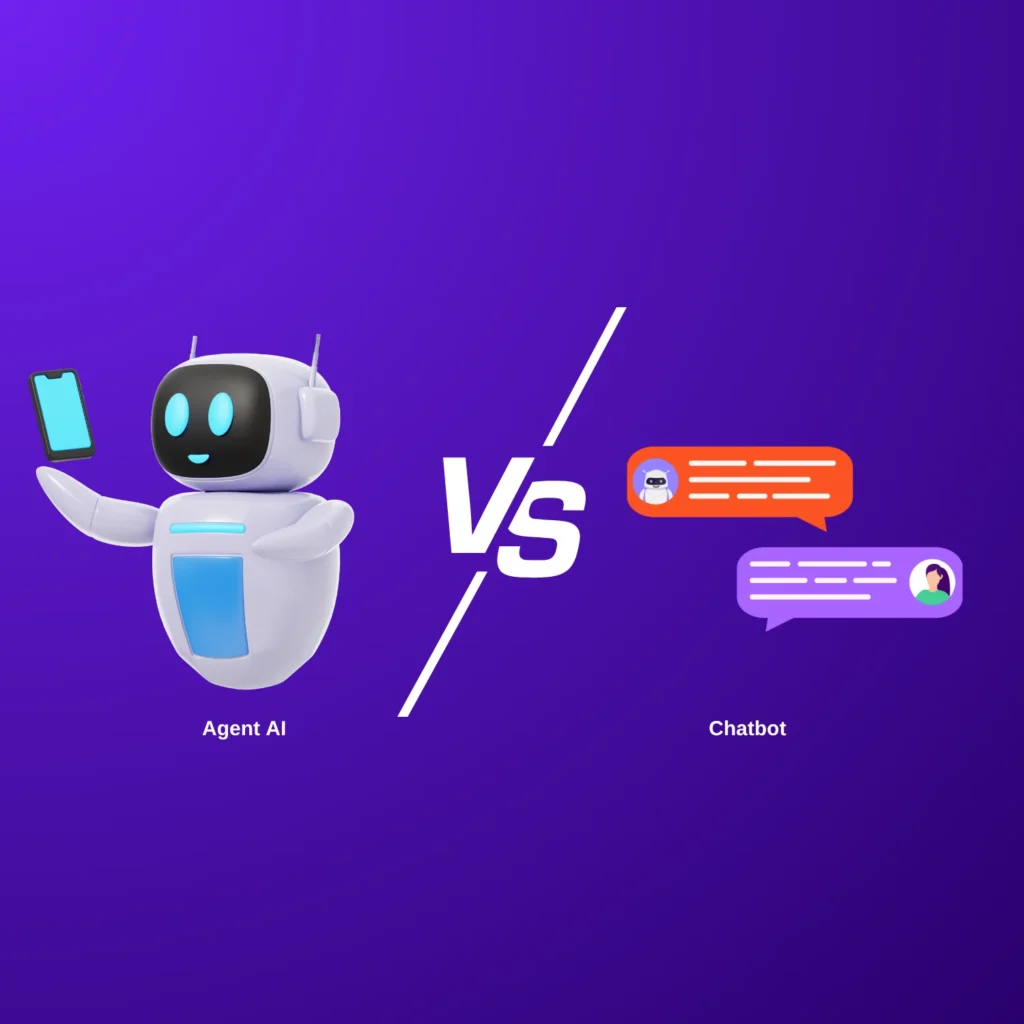Introduction
Last quarter, Johnson Honda sold 47% more cars than their biggest competitor—all because of one strategic move: adopting AI car sales chatbots that managed lead qualification, test-drive bookings, and follow-ups around the clock. This isn’t an isolated case. Data from industry leaders like Fullpath, Cox Automotive Inc., CDK Global, and MOTOR reveal that AI is consistently delivering 10–30% revenue uplifts, streamlined service operations, and earning a bigger share of dealership budgets as we head into 2025.
The urgency is clear. Average dealerships lose countless opportunities because of slow response times. In fact, 67% of shoppers abandon dealers online due to sluggish engagement (MOTOR). Meanwhile, the momentum behind AI is undeniable: 81% of dealerships plan to increase their AI budgets in 2025.
The bottom line? AI car sales technology is no longer a future play—it’s a competitive advantage today. And dealerships that don’t adopt risk falling behind in a market where speed, personalization, and automation now define success.
Industry leaders like Fullpath, Cox Automotive, and CDK Global report striking, data-driven gains from AI adoption in dealerships. We’re talking 10–30% revenue uplifts, better service benchmarks, and AI commanding more budget allocation heading into 2025. Against this backdrop, seven AI innovations are reshaping automotive retail—from lead generation to service retention.
Let’s explore each, backed by stats, case examples, and actionable steps for dealerships pursuing smarter, customer-centric growth.
Way #1: AI-Powered Lead Qualification (That Never Sleeps)
Problem: Manual follow-ups fail to capitalize on buyers’ peak interest — a costly gap.
Solution: AI chatbots engage leads in real time, personalize responses, and hand off high-intent prospects to reps seamlessly.
Real-world stat: Dealerships using AI tech achieve 27% higher showroom appointment rates and a 26% increase in lead-to-sale conversions.
AI chatbots can pre-qualify leads with details like budget, preferred models, fuel type, and financing needs, ensuring the sales team focuses on high-value opportunities.
Action Steps:
- Implement chatbots across your website, social, and messaging channels.
- Set up pre-qualifying workflows that segment leads by intent.
- Sync chatbot leads with CRM systems for seamless handoff.
- Train sales reps to handle AI-qualified leads with heightened context.
Way #2: Predictive Analytics for Inventory Optimization
Problem: Overstocked, slow-moving inventory ties up capital and limits agility.
Solution: AI-driven predictive analytics forecast demand by vehicle model, enabling smarter restocks, pricing, and allocation.
Supporting Insight: Predictive tools help dealers forecast consumer demand using DMS, CRM, and external data, moving past generic conquest tactics.
AI also aids in balancing inventory levels and reducing holding costs by analyzing market trends, sales history, and seasonal variations.
Action Steps:
- Review current inventory and forecasting practices.
- Integrate predictive analytics platforms.
- Automate alerts for restocking and markdown opportunities.
- Monitor turnover metrics to refine inventory strategies over time.
Way #3: Personalized Customer Journeys at Scale
Story Opener: It’s late—yet a buyer receives a custom demo video, payment options, and a test-drive link—all fully automated.
AI vs. Traditional: Instead of generic emails, AI powers behavior-triggered, dynamic content tailored to each customer’s stage and interest.
Stat Insight: AI adoption correlates with 10–30% revenue increases.
Action Steps:
- Map the buyer’s path from first touch to post-sale.
- Define key behavioral triggers (e.g., models viewed, time on page).
- Design personalized templates—videos, offers, follow-ups.
- Measure and optimize impact metrics like CTR and conversion.
Way #4: Virtual Showroom & Automated Inspections
Industry Trend: Car buying is now digital-first. Customers expect immersive browsing from home—with 3D tours, AR, and instant AI chat support.(Stacker, kenect.com)
AI Innovation: Virtual showrooms enable 360° vehicle exploration. Meanwhile, AI inspection systems like UVeye scan vehicle undercarriages, exteriors, and tires, identifying issues in under 30 seconds. At one dealership in Orlando, UVeye flagged 76 issues in a lightning-fast scan.
Action Steps:
- Pilot virtual showroom or AR tools.
- Test an AI inspection system for service throughput boosts.
- Integrate visuals and inspection reports into customer dashboards.
- Measure engagement and follow-through improvements from these features.
Way #5: Dynamic Price Optimization
Problem: Static pricing fails to reflect shifts in demand, aging stock, or competitor pricing.
AI Advantage: Smart pricing engines adjust offers using real-time demand signals, inventory age, and competitor intel.
Benefits: AI pricing drives both faster turnover and margin improvements.
Action Steps:
- Feed AI tools with market and competitor price data.
- Define acceptable price bands and guardrails.
- Launch dynamic pricing with performance tracking.
- Review sell-through and margin trends regularly.
Way #6: Intelligent, Multi-Channel Follow-Up
Problem: Nearly 48% of salespeople fail to follow up on leads—a huge missed opportunity.
AI Enhancements:
- Optimal timing, channel selection (SMS, email, call).
- Sentiment and behavior analytics personalize messaging.
Result: AI systems deliver 32% higher conversions, 70% faster responses, and 25% recovery of dormant leads.
Action Steps:
- Pipe leads into AI platforms that automate omni-channel engagement.
- A/B test timing, tone, and message formats.
- Adjust workflows based on engagement performance data.
Way #7: Predictive Customer Service & Retention
Retention Power: Service customers offer 67% higher lifetime value than one-time buyers.
AI Capabilities: Predict service needs, detect churn risk, and initiate proactive maintenance or upsell offers.
AI Industry Outlook: AI virtual assistants and predictive service tools are now standard for engaging customers, delivering alerts, and boosting loyalty.
Action Steps:
- Integrate AI with service DMS.
- Set up proactive messaging (e.g., maintenance reminders).
- Track retention and satisfaction score improvements.
- Deploy targeted campaigns to reduce churn and uplift service bookings.
Real Achievements in Action
- CarMax, a major used-car retailer, launched an AI assistant that improved chatbot containment by 30%, contributing to increased profits and elevated customer experiences.
- AI is now outperforming humans in areas like appointment scheduling, call handling, and post-sales support—saving time and improving ROI.
Summary

Conclusion
The era of AI car sales and automotive AI technology is here. Forward-thinking dealerships leveraging automation—from smart chatbots to predictive retention engines—are pulling ahead. If you’re ready to scale smarter, enhance customer experience, and drive sustainable growth, these seven AI innovations offer a proven roadmap to success.



